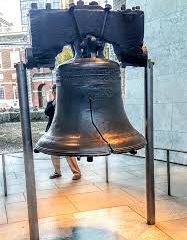Detroit: The Rise of a Resilient City

Introduction
Detroit, once known as the heartbeat of the American automotive industry, has endured significant economic challenges over the past few decades. However, recent developments highlight a city on the rebound, embracing innovation and revitalisation. This transformation is crucial not only for its residents but also for the broader context of urban renewal across the United States.
Economic Revitalisation
In the past few years, Detroit has experienced a surge in investments, particularly in technology and manufacturing sectors. The city’s unemployment rate has dropped significantly, falling from over 20% in 2013 to around 4.5% in 2023. This is indicative of a thriving job market as companies flock to Detroit’s revitalised landscape, drawn by its competitive real estate and skilled workforce.
The recent launch of several start-ups in the tech space, coupled with the Detroit Regional Chamber’s efforts to promote entrepreneurship, underscores the city’s commitment to diversifying its economy. Major companies, such as Google and Amazon, have also shown interest in establishing a presence in the city, signalling a reinforcing trend that could lead to sustained growth.
Cultural and Infrastructure Developments
Alongside economic advancements, Detroit is observing a renaissance in cultural and urban development. The Detroit Riverfront, which underwent a comprehensive redevelopment over the past decade, has transformed into a vibrant space for both locals and visitors. The addition of parks, walkways, and public art has significantly enhanced the city’s appeal.
Moreover, ongoing infrastructure projects, including the expansion of public transportation systems, aim to improve connectivity within the city and enhance accessibility for residents. A recent announcement revealed plans for a new light rail system that will further integrate Detroit with nearby suburbs, thereby boosting both tourism and daily commuting.
Conclusion
The revitalisation of Detroit signifies a strong narrative of resilience and transformation in an urban context. As the city continues to innovate and attract investment, it serves as an inspiring case study for other cities aiming for revival. Forecasts indicate that if current trends persist, Detroit could emerge as a major tech and cultural hub in the next decade.
For readers, understanding the dynamics of Detroit’s resurgence can offer valuable insights into economic and urban development trends. The city’s journey underscores the importance of adaptive strategies in fostering a thriving future, making it a model for resilience amid challenges.









